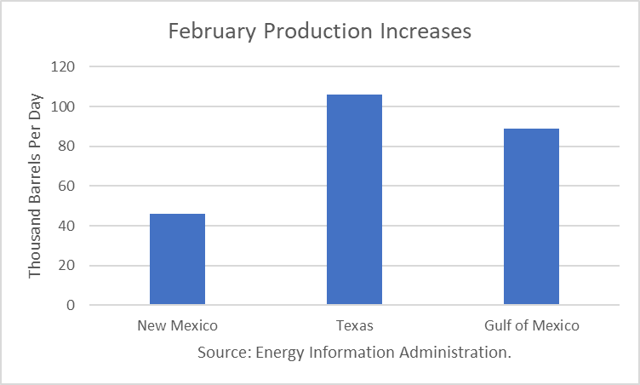
The Energy Information Administration (EIA) reported that February crude oil production averaged 10.264 million barrels per day (mmbd), up 260,000 b/d from January, setting a new all-time record for the U.S. The large increase reflected a gain from a level that was constrained by weather issues.
The largest increases were recorded in Texas (106,000 b/d), the Gulf of Mexico (89,000 b/d) and New Mexico (46,000 b/d).

The EIA-914 Petroleum Supply Monthly (PSM) figure was 26,000 b/d lower than the weekly data reported by EIA in the Weekly Petroleum Supply Report (WPSR), averaged over the month, of 10.290 mmbd. EIA’s most recent weekly estimate for the week ending April 20th was 10.586 mmbd.

Looking ahead, the EIA is projecting December 2018 output to rise to 11.38 mmbd, up 1.43 mmbd from December 2017. In addition, EIA projects that other supply (liquids) will rise to 6.85 mmbd, up 551,000 b/d from last December, for a total gain of 1.98 mmbd.
On average, oil-directed rigs have risen by five rigs per week thus far in 2018. Due to the lag between rig count to prices, this average should rise in the months just ahead.
Conclusions
The rise in U.S. production of crude and liquids of 2.0 mmbd by end December is based on EIA’s forecast for WTI of $59.39, on average, for 2018. If prices remain where they are now—or rise even further— U.S. production will response will be much larger than OPEC currently expects.
Check back to see my next post!
Best,
Robert Boslego
INO.com Contributor - Energies
Disclosure: This contributor does not own any stocks mentioned in this article. This article is the opinion of the contributor themselves. The above is a matter of opinion provided for general information purposes only and is not intended as investment advice. This contributor is not receiving compensation (other than from INO.com) for their opinion.

buffett why s money.